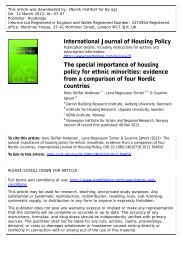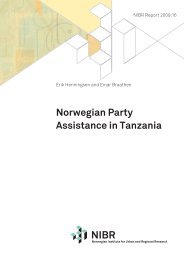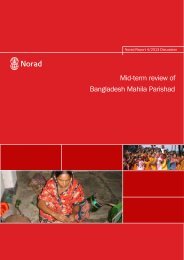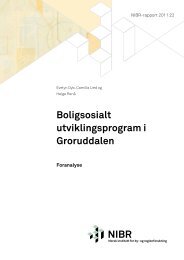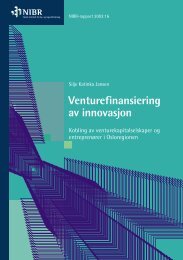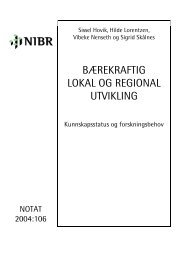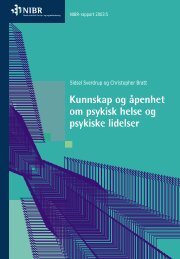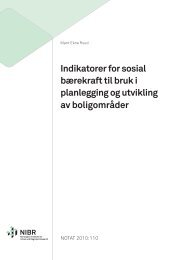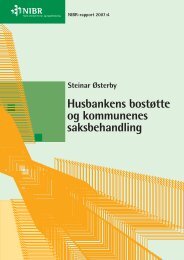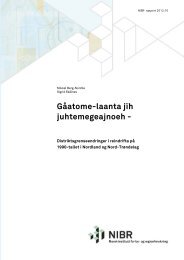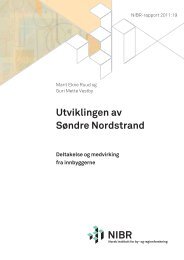Forvaltningsmuseenes og NIKUs ansvar og roller i forvaltningen av ...
Forvaltningsmuseenes og NIKUs ansvar og roller i forvaltningen av ...
Forvaltningsmuseenes og NIKUs ansvar og roller i forvaltningen av ...
- No tags were found...
You also want an ePaper? Increase the reach of your titles
YUMPU automatically turns print PDFs into web optimized ePapers that Google loves.
21opportunity to do research for a part of the time. In this way,research-based learning links dynamically with learning acquiredfrom administrative work. It is the university museums which arebest able to realize this potential in practice.Strengths and weaknesses of the current management modelIn assessing the strengths and weaknesses of the current system oforganization and division of responsibilities, we need to askwhether it allows the museums to manage automatically listedartefacts and sites and ship finds in conformity with the originalintentions. The answer will vary among the different administrativemuseums and NIKU.University affiliation, this study found, enables to a much greaterextent the administrative museums to fund adjacent supportcapacities from money taken from the ministry’s basic allocationthan is the case of the maritime museums and NIKU asindependent trusts. This is partly because the universities areknowledge-producing organizations, with research and scientificpr<strong>og</strong>ress as two of the most important arenas. In other words,important ancillary functions such as collections management andresearch, which support the execution of administrativeresponsibilities, are a natural adjunct to university operations.Academic priorities and activities complement and supplementeach other, fostering an internal dynamic between administrativeresponsibilities and research.This dynamic is not as prominent in the independent maritimemuseum setting. These museums will anyway be focused mostlyon public outreach and activities, in addition to collectionsmanagement and research.Giving administrative responsibilities to the universities hasscientific benefits as well. First, there is access to a highlyproficient and diverse scientific community, where one can findpeople with expertise in relatively narrow areas. It is easiertherefore to consult with specialists in particular cases and engagein collaborative work requiring a multi or interdisciplinaryapproach.University museums h<strong>av</strong>e a significant advantage in their proximityto archaeol<strong>og</strong>ical research communities. This advantage alsoensures that the needs of a scientifically informed system ofNIBR-rapport 2012:30



